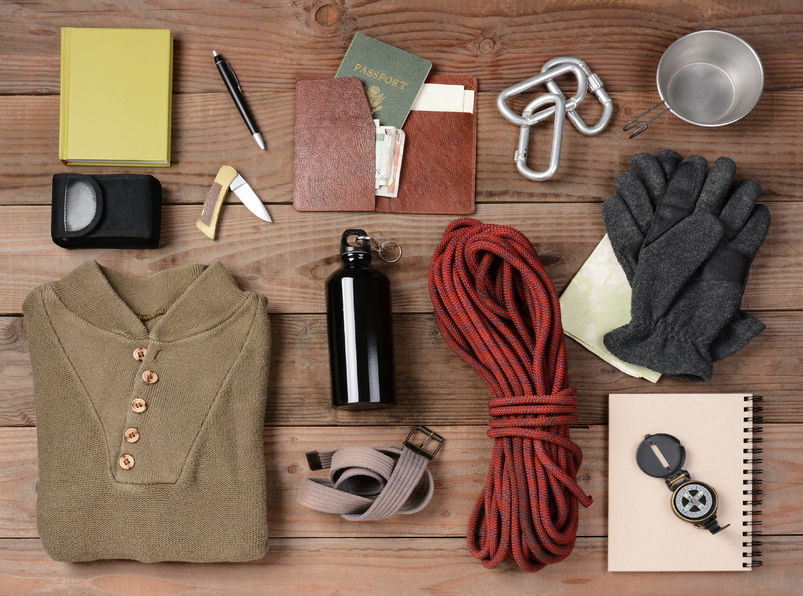Emergency Preparedness - Every Day Carry (EDC)

A major part of Emergency Preparedness is having a certain mindset and items available to you at all times. This can come in all shapes and sizes depending on your daily lifestyle and environment. Basically you want to be prepared for an event no matter where you are. For example; if you work in the city and you commute to work every day. If something happened either at work or in between would you be prepared? Now if it was in between you would be ok, if you set up your vehicle for Emergency Preparedness as described in my vehicle preparedness article. If you work from home and have it prepared then this section will be of less importance to you. Think of this as the backpack, messenger bag or hand bag you carry with you everyday except we will step it up a notch. For simplicity sake, let's call these Get Home Bags.
The "Big" Get Home Bag
This is a big backpack full of first aid and survival items, shelter, clothing, food, water and weapons (If legal) as well as the items you use daily. So the idea here is you have everything you need if something goes down (Head off to your home or a safe place) as well as the items you use on a daily basis. Now me personally, I don't need something like this. I work in a metropolitan area, so #1 if I was carrying something like this I would stand out and #2 I wouldn't need something like this. Between what I have on my person, in the office , vehicle and the resources around me I will be OK. This is important for individuals who work in remote and/or dangerous locations or extreme weather conditions. I'm not going to list the items that go into this bag. Basically it's the items listed in my "Home" and "Vehicle" section but smaller versions.
The "Minimalist" Get Home Bag"
This is bag I like to focus on. I don't want to be lugging around a larger backpack full of supplies I may need. I like to focus on the critical and comfort items only. The items I focus on here are a First Aid kit, Emergency Blanket, Small Survival Items (Water Purification straw, lighter, banana, small crowbar, and some para cord), work gloves, small flashlight, extra batteries and screwdriver. I also have some hygiene items, notepad/pen, cell phone cables and charger. I keep an emergency whistle on the bag itself. This is complimented with a folding knife I keep on my person, a stainless steel water bottle I have at my desk, food, water and all the supplies in my vehicle.
Clothing and Shoes
I didn't mention something that may be important; sneakers. It will be a good idea to have a pair handy if you job requires you to wear boots or dress shoes. I like implementing comfortable clothing (Depending on the weather) and shoes into my work outfit. That includes shoes that I can get away with as dress shoes and warm, cold or water resistance clothing depending on the weather.
Training
To prove that your EDC is sufficient is to walk home from work one day. The reality is that if a disaster happens all the roads will be completely blocked. It will be a combination of accidents, other people trying to get home and abandoned vehicles. This will happen immediately. Make sure you have a map of your town and compass so you can navigate your way home.
Final thought
The subject of EDC can be very involved. What I mentioned in this article is enough to start you thinking and set you on the right path. I've seen folks with their vehicles completely packed with supplies like they were never going back home. To me that's overkill plus now they have the risk of someone stealing hundreds or thousands of dollars worth of their gear.